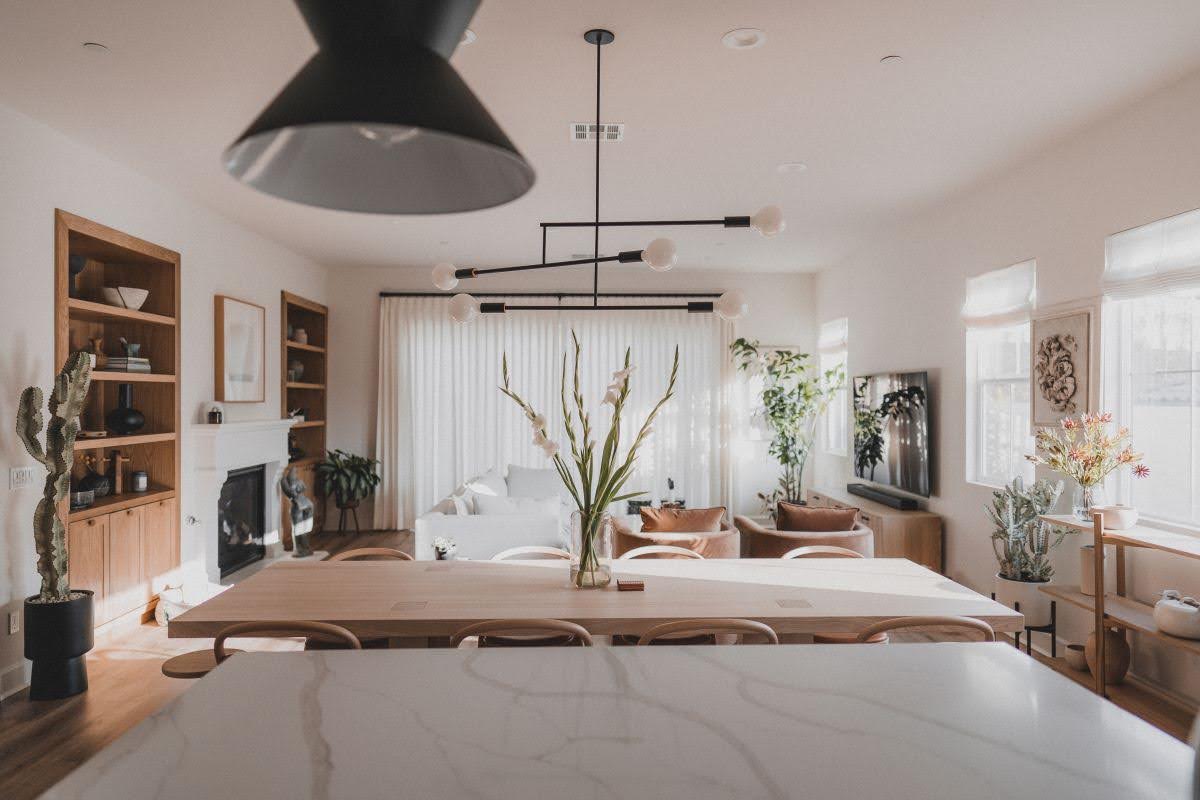Natural light has the power to transform any room, making spaces feel larger, warmer, and more inviting. At Accent Painting, we know that one of the most effective ways to maximize the impact of sunlight in your home is through thoughtful paint color selection. Whether you’re blessed with sun-drenched rooms or you’re looking to brighten up a dim corner, understanding how paint colors interact with natural light can enhance the ambiance and functionality of every space.
Understanding the Science of Light and Color
Before diving into specific color recommendations, understand how natural light and paint colors work together. Natural light changes throughout the day and varies depending on the direction. North-facing rooms tend to receive cooler, indirect light, while south-facing rooms are bathed in warm, steady sunlight. East-facing spaces glow with gentle morning light, and west-facing rooms capture the golden rays of late afternoon.
Paint colors reflect or absorb light depending on their tone and finish. Lighter colors reflect more light, making rooms feel airy and spacious, while darker hues absorb light, resulting in a cozier, sometimes smaller feel. Additionally, paint finishes—such as matte, eggshell, or satin—can influence how light bounces off walls, subtly changing the appearance of your chosen shade.
Selecting Paint Colors for Sunlit Spaces
When you’re working with rooms that receive abundant natural light, you have more freedom to experiment with both light and dark shades. However, even in these spaces, your color choice can shift dramatically based on the intensity and direction of the sun.
Cool Colors for a Calming Effect
In rooms with plentiful sunlight, cool-toned colors such as soft blues, gentle greens, and pale lavenders can create a refreshing, tranquil atmosphere. These shades help to balance the warmth of direct sunlight, preventing the room from feeling too hot or overwhelming. Cool colors are especially effective in sunny spaces because they reflect light without amplifying brightness to an uncomfortable level.
Neutrals That Enhance Natural Light
Whites, creams, and light grays are classic choices for maximizing light. These neutral hues act as a blank canvas, allowing sunlight to bounce freely around the room. Opting for a white with a slight undertone—like a warm ivory or a cool, crisp blue-white—can further complement the natural lighting conditions unique to your home.
Avoiding Color Washout
One thing to keep in mind is that intense sunlight can sometimes dilute very pale colors, making them appear almost white and washing out their intended effect. To counteract this, consider shades with deeper undertones or a slightly higher saturation. Accent Painting’s color consultants can help you identify hues that will hold their own under strong sunlight while still enhancing the space’s overall brightness.
Brightening Spaces With Limited Natural Light
Rooms that lack sufficient sunlight—such as basements, hallways, or north-facing bedrooms—require a more strategic approach. The goal is to harness every bit of available light to make the space feel open and welcoming.
Lighter Shades for Maximum Reflection
In low-light areas, lighter paint colors are your best friend. Soft whites, delicate pastels, and pale yellows can help brighten a room by reflecting whatever natural light does make its way in.
Leveraging Warm Undertones
Cool colors can sometimes feel flat in dim spaces, while warm undertones—think buttery creams, blush pinks, or gentle peaches—can infuse a sense of coziness and vitality. These shades mimic the warmth of sunlight, making spaces feel less shadowy and more cheerful.
Choosing the Right Finish
The finish you choose is just as important as the color itself. Satin or eggshell finishes have a slight sheen that helps reflect light, unlike matte finishes, which absorb it. This subtle gloss can make a noticeable difference in how much light circulates in the room.
How Paint Color Can Affect Your Mood and Perception
Color psychology plays a significant role in how we experience a room. Light, bright spaces tend to evoke feelings of happiness and energy, while darker spaces may feel more intimate or subdued.
By thoughtfully selecting paint colors that enhance natural light, you can influence the mood and functionality of your home. For example, a soft blue in a sunny kitchen can create a calm, clean environment, while a warm cream in a dim hallway can make the space feel more welcoming.
Tips for Testing Paint Colors in Your Home
Before committing to a full-room paint job, test potential colors on your walls and observe them at different times of day. Sunlight changes hue and intensity, which can cause paint colors to look different in the morning versus the evening.
Accent Painting recommends painting large swatches and checking them over several days. If you’re unsure where to start, we can help with color consultations to guide you through the selection process.
Maximizing the Effect of Natural Light with Strategic Painting
In addition to wall color, consider painting ceilings, trim, and even floors in lighter shades to further amplify natural light. Glossy or semi-gloss finishes on trim can catch the sunlight and help distribute it around the room. Mirrors, light furnishings, and thoughtful window treatments also play a role in maximizing the light that your chosen paint colors reflect throughout your home.
Let Accent Painting Help You Transform Your Space
Choosing the right paint color to complement your home’s natural light is both an art and a science. At Accent Painting, our experienced professionals are dedicated to helping you achieve a look that not only brightens your home but also fits your style and daily needs. Whether you’re updating a sun-filled living room or looking to bring life to a darker corner, we’re here to make your vision a reality.
Ready to get started? Contact us today for a personalized consultation and discover how the right paint color can maximize the natural light in your home.

